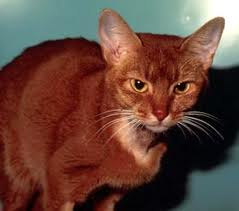Disorders
- Anorexia Nervosa
- Binge Eating Disorder
- Bitot's Spots
- Bulimia Nervosa
- Macrocytic Anemia
- Megaloblastic Anemia
- Night Blindness
- Peptic Ulcer
- Prophylaxis
- Rhodopsin
- Rickets Disease
- Scurvy Disease
- Wilson’s Disease
- Xerophthalmia
- Hemochromatosis
- Siderosis
- Thalassemia
- Sideroblastic Anemia
- Porphyria Cutanea Tarda
- Sickle Cell Anemia
- Kwashiorkor
- Menkes Disease
- Neutropenia
- Keratomalacia
- Beriberi
- Pellagra
- Macrocytic
- Megaloblastic
- Pernicious Anemia
- Scurvy
- Rickets
- Osteomalacia
- Abetalipoproteinemia
- Muscular Dystrophy
- Haemolytic Anaemia
- Cholestatic Constipation
- Pretibial Myxedema
- Cretinism Diesease
- Hypothyroidism
- Hypothyroidism
- Feline Hyperthyroidism
- Graves Disease
- Plummer’s Disease
- Thyrotoxicosis
- Acrodermatitis Enteropathica
- Congenital Hypothyroidism
- Hashimoto’s Thyroiditis
- Hyperthyroidism
- Keshan Disease
- Lose Weight with Hypothyroidism
- Metal Fume Fever
- Postpartum Thyroiditis
- Thyroid Storm
- Subclinical Hypothyroidism
Feline Hyperthyroidism - Symptoms and Treatment
Description

This illness is well known in humans and there are a lot of people that do end up with hyperthyroidism. However it has been known that a lot of human illnesses such as diabetes and other illnesses can be found in animals at some point as well and this is true of hyperthyroidism as there is an animal version of this illness as well. Feline hyperthyroidism is one of the most common diseases that appears in middle aged and older cats. As the years go by for the cats the chance of contracting feline hyperthyroidism is at a greater risk. The signs of this illness are mostly the same that humans get when they fall victim to hyperthyroidism, also the reason for this illness starting up is also the same reasons as in humans. The thyroid gland can enlarge and then this can then lead to an increase in the amount of thyroid hormones that are being produced and then this will ultimately lead to feline hyperthyroidism. However the way that this illness is detected will be different from humans. The cat will probably have to have a blood sample taken so that it can be analyzed by the vet and then a proper and also correct diagnosis can be made.
Symptoms of Feline Hyperthyroidism
As already discussed feline hyperthyroidism will appear in the cat the same way that it will appear in humans. The symptoms that will appear in the cat will also be the same that appear in humans and this is because the illness will attack the same parts of the cat’s body as it would with humans. If you know about hyperthyroidism then you would know that this illness can and will attack the major organs of the cat or human. A vet will have to be very careful when making a diagnosis on a cat or any other kind of animal because one false symptom can then lead to an incorrect diagnosis and this can then lead to the wrong treatment being prescribed by the vet. But when a vet is trying to diagnose feline hyperthyroidism the vet will have to look out for some certain symptoms that will give the illness away and then the doctor can make the correct diagnosis. The most common signs that will appear in a cat that has feline hyperthyroidism are weight loss this is not because the cat isn’t eating. It is because of the fact that the cat’s metabolism has been ruined by this illness appearing in the animal. Also the other signs to look out for are an increased appetite which will make the cat eat a more even though the first symptom is a weight loss. However an increased appetite will not always appear in the animal that has the hyperthyroidism illness. Some owners have explained that their cat has a decreased appetite and this is usually the first sign to show that something is seriously wrong with your cat or any other animal. Other symptoms include vomiting, and an increased thirst as well as some difficulty breathing.
Treatment for Feline Hyperthyroidism
There is treatment available for feline hyperthyroidism, which will come as a welcome relief to the owners of the animal. The treatment options that will become available will include radioactivity iodine also there might be a surgical removal of the gland or your cat might be prescribed some anti-thyroid medication. The choice of treatment will only be decided by the kidney function status in the animal, this can be done by a blood test but it can also be very hard to assess the kidney function accurately so this might not be the best option at the time. Generally the veterinarian might start off with the medication and then they will obviously decide to keep a very close eye on the cat to see if there is any immediate change in the cat. However if the vet does decide to use a blood test instead of just taking a complete guess then there is a new blood test that is available from Michigan State University that has been proven to help to assess the kidney function in the animal. This is called the iohexol clearance test and in this test a radiographic agent with the name iohexol will be injected into the ill animal and then the speed of which the kidneys will clear the iohexol will be measured. This test can be carried out in the vet’s office with ease and then the lab can then decide the outcome and what treatment option to use on the animal.
I hope that this article will provide you information about feline hyperthyroidism.
